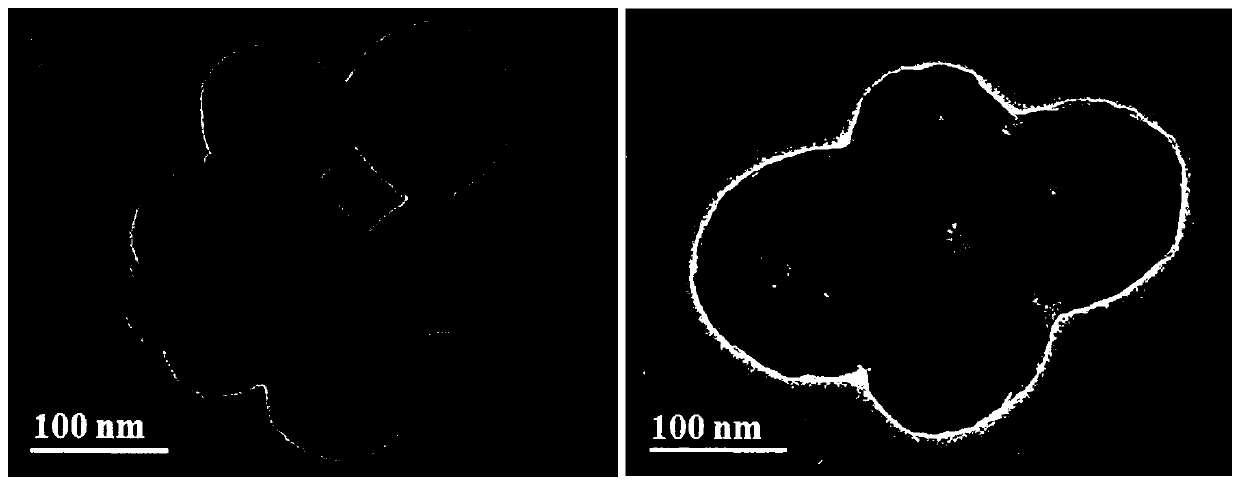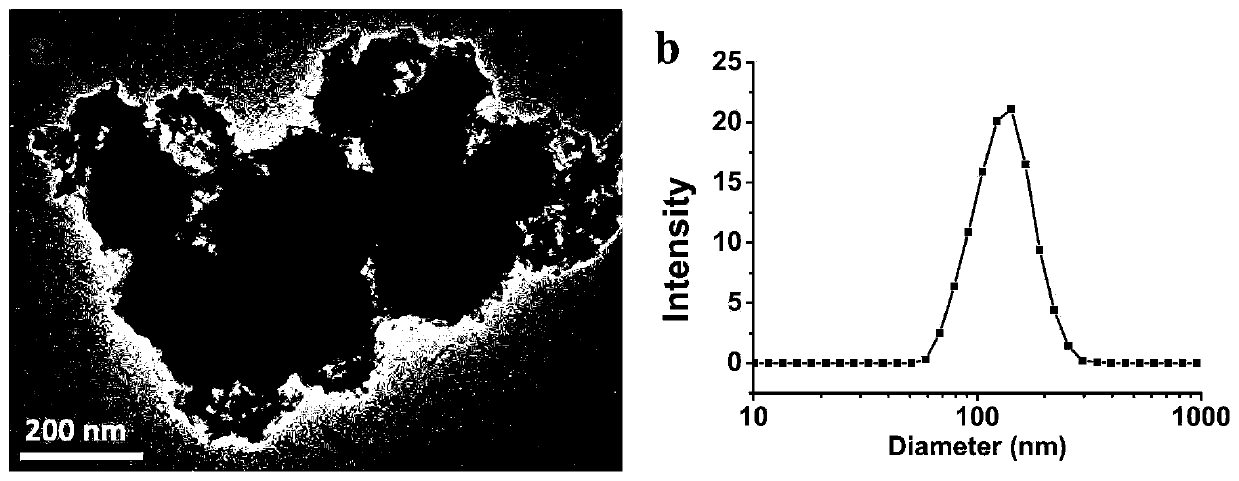Single light-activated nano particle and preparation method and application thereof
A nanoparticle, light-activated technology, applied in the field of medicine, can solve the problems of limited effect and need of combination therapy
- Summary
- Abstract
- Description
- Claims
- Application Information
AI Technical Summary
Problems solved by technology
Method used
Image
Examples
preparation example Construction
[0036] The present invention also provides a method for preparing single light-activated nanoparticles described in the above technical solution, comprising the following steps:
[0037] Provide hollow bismuth selenide nanoparticles;
[0038] The hollow bismuth selenide nanoparticle, phase change material, free radical initiator and solvent are mixed, and a loading reaction is carried out to obtain a single light-activated nanoparticle.
[0039] The invention provides hollow bismuth selenide nanoparticles. In the present invention, the method for preparing hollow bismuth selenide nanoparticles preferably includes the following steps: providing porous bismuth oxide nanoparticles, and preparing hollow bismuth selenide nanoparticles by using the porous bismuth oxide nanoparticles as templates.
[0040] In the present invention, the preparation method of the porous bismuth oxide nanoparticles preferably includes the following steps: mixing a bismuth salt, an acidic solution, an a...
Embodiment 1
[0052] (1) After mixing bismuth nitrate pentahydrate (0.485g, 1.19mmol) and nitric acid aqueous solution (13mL, 1mol / L), sodium hydroxide (0.144g, 3.6mmol), PVP (0.6g, Mw=10000 ) and ethylene glycol (57mL), stirred at 500rpm until the raw materials were completely dissolved, then transferred the resulting reaction solution to a stainless steel reactor, reacted at 150°C for 3h, cooled the resulting system to room temperature and centrifuged (10000r / min, 15min), the resulting solid material was washed 4 times, and dried in a vacuum oven for 48h to obtain porous bismuth oxide nanoparticles;
[0053] (2) Dissolve sodium selenite (0.0432g, 0.25mmol), ascorbic acid (0.4g, 2.27mmol) in deionized water (30mL), add porous bismuth oxide nanoparticle aqueous solution (0.9mL, 0.1mmol / L) , mixed evenly, transferred to the reaction kettle, reacted at 150°C for 12h, cooled the obtained system to room temperature and then centrifuged (10000r / min, 15min), washed the obtained solid material 4 ...
Embodiment 2
[0060] Prepare Bi according to the method of embodiment 1 2 Se 3 @AIPH nanoparticle, the difference from Example 1 is that sodium hydroxide is replaced by urea (0.213g, 3.55mmol) in step (1);
[0061] Measured by thermogravimetric analysis and UV-visible spectrophotometer, the Bi prepared in this embodiment 2 Se 3 The total loading of @AIPH nanoparticles lauric acid and AIPH was 17.5%, and the loading of AIPH was 11.7%.
PUM
| Property | Measurement | Unit |
|---|---|---|
| Hydrated particle size | aaaaa | aaaaa |
| Wall thickness | aaaaa | aaaaa |
Abstract
Description
Claims
Application Information
 Login to View More
Login to View More - R&D
- Intellectual Property
- Life Sciences
- Materials
- Tech Scout
- Unparalleled Data Quality
- Higher Quality Content
- 60% Fewer Hallucinations
Browse by: Latest US Patents, China's latest patents, Technical Efficacy Thesaurus, Application Domain, Technology Topic, Popular Technical Reports.
© 2025 PatSnap. All rights reserved.Legal|Privacy policy|Modern Slavery Act Transparency Statement|Sitemap|About US| Contact US: help@patsnap.com



